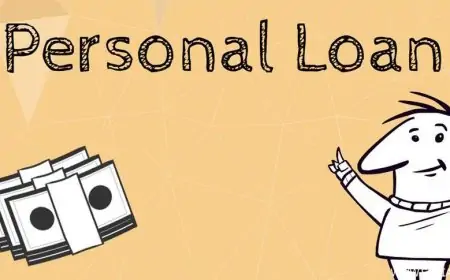What is meant by digital banking?
Today most customers hold smartphones and other important gadgets, which provide them with simple access to online services. Note that digital banking is a procedure of digitalization of your banking services and activities that were available previously just in the branches. This substitutes traditional bank branch activities with an online presence, making it highly convenient for users to conduct transactions with ease. Still unable to understand. For instance, suppose you have an account with 2 banks Bank of India and Bank of Maharashtra. Now, you want to transfer funds from your Bank of Maharashtra account to your Bank of India account. So, for this transfer, nearly a decade back, you would have visited your Bank of India branch physically at the Bank of India timings to transfer funds from your Bank of Maharashtra account. However, now with the rise in digital banking and acceptance of digitization, you can easily transfer the fund with just a click in less than a minute from your Bank of India account to your Bank of Maharashtra account. This process eliminates the need for visiting the banks during Bank of Maharashtra timings and Bank of India timings for most banking-linked transactions.
Digital banking – history
The history of such financial institutions dates to around 1993 when the banking software Temenos AG was founded. In the year 1994, Microsoft money made bank accounts accessible for regular households. In the years from 1997 to 1998, digital-only banks were introduced in the United States of America (USA) and Canada. Between the years 2001 and 2009, the number of users of online banking reached nearly 54 million just in the US. This specific shift was highly aided by the introduction of the first iPhone in the year 2007. Over the years, the transition towards the online banking mode was driven by the millennials as well as Temenos as it kept acquiring different competitors and several mobile app leaders.
Digital banking history in India
In the year 1988, the RBI (Reserve Bank of India) set up a committee to assess the possibility of digitizing banking sectors. With the advent of personal computers, information technology (IT) was adopted by Indian banks. They migrated to the LAN (local area network) connectivity. The core banking solutions permitted banks to offer ‘anytime and anywhere banking’ for better customer convenience. UPI (unified payments interface) system introduced in the year 2016 enabled the banks to simply transfer funds. Many of the customers even were encouraged to link their accounts with their Aadhaar numbers for enhanced security. Currently, Indian banks are seeking ways to provide an accurate, quality, and quick customer experience. Note that for all of them, digitalization is looked upon as one of their major priorities by them.
What are the features of digital banks?
24 X 7 services
Banking services today are available anywhere, anytime with zero requirements to approach the bank branch. The overall process is convenient, user-friendly, secure, and quick, which enhances the customer experience while lowering expenses.
Data aggregation
Having data permits banks to provide personalized solutions to users. Digitalisation offers an easy and simple way for consolidating and managing finances. Banks can use different info like age, spending patterns, repayment obligations and income of the consumers to offer them with a personalized solution.
Security
Security is one of the crucial features brought to you by digitalization. Banks use well-defined systems and data security and confidentiality guidelines to make sure the safety of sensitive data. Also, they implement additional measures through multi-layered controls i.e., 2-factor authorization.
Invisible services
IVRS or interactive voice response system or voice-based system offers solutions for better and improved customer experience. Moreover, growth is expected by using voice-based apps that do not require any device.
What are the benefits of using digital banking?
∙ Banks can lower their overheads like personnel expenses, rent, and branch maintenance expenditures.
∙ Digitalisation allows instant data transfer, lowering the thorough transaction time.
∙ All the transactions conducted through the digital banking accounts are performed on secure servers, ensuring efficiency and privacy.
∙ As banking services become highly accessible, financial institutions can simply offer various products to a higher customer base, thus enhancing their revenues.
∙ Providing innovative digital measures to ameliorate customer experience that assists to attract and retain clients.
∙ Financial institutions can predict the trends and remain ahead of the competition to assist gain market share.
∙ Banks adhere to the new rules & legislations, bringing transparency and increasing customer trust.
Drawbacks of digital banking
∙ While financial institutions are well equipped with a secure server, note that security is a major concern, and they are witnessed external and internal risks.
∙ Many consumers lack the knowledge and awareness and prefer direct or in-person banking as this appears more comfortable and reliable.
∙ Fear of losing funds while making digital transactions is also a reason why most individuals from rural regions as well as senior citizens prefer conventional banking.
∙ Lack of knowledge and skills deters employees to adapt to the constantly changing and innovative technologies.
Neobanks vs. digital banksOften, neobanks and digital banks are used interchangeably, they are way more different. Neobanks permit users to borrow, withdraw, deposit, and easily transfer funds and conduct various other transactions with ease. However, neobanks are thoroughly online and might operate independently without partnering with the traditional bank. On the contrary, digitization in the field of banking is a major initiative taken by traditional banks to provide you with banking services online. For instance, the Bank of Maharashtra is a traditional bank, which offers both traditional and digital banking. So, you can do traditional banking by visiting the bank during Bank of Maharashtra timings or conduct the same transactions online through the Bank of Maharashtra net banking.





![[WATCH VIDEO] Sophie Rain and sister Sierra Rain as Black Spiderman goes viral [WATCH VIDEO] Sophie Rain and sister Sierra Rain as Black Spiderman goes viral](https://www.sociallykeeda.com/uploads/images/202403/image_140x98_660976c59cce0.webp)





![[FULL WATCH VIDEO] Will Levis And Gia Duddy Leak Video Viral On Social Media [FULL WATCH VIDEO] Will Levis And Gia Duddy Leak Video Viral On Social Media](https://www.sociallykeeda.com/uploads/images/202405/image_140x98_6651e7ae8038d.webp)


